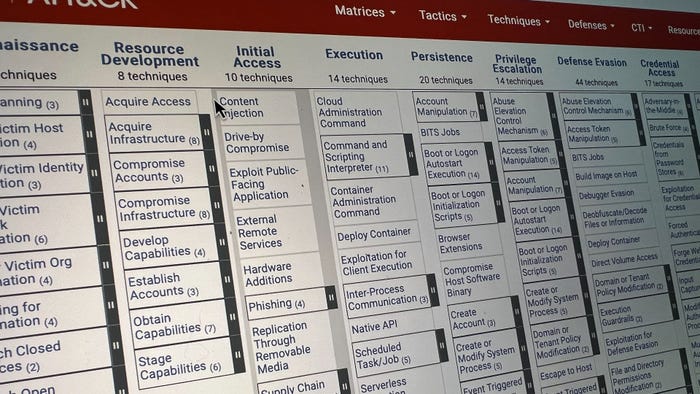Data-Driven Exposure Management in CybersecurityData-Driven Exposure Management in Cybersecurity
Effective exposure management addresses the "so what?" of potential threats, helping you make strategic decisions based on objective, data-driven measurements.
January 27, 2025

Security teams, you're already up against a lot. Unfortunately, despite all your efforts, you may still have critical blind spots. Point solutions and siloed approaches to vulnerability management can create gaps in security coverage — gaps that grow wider as attack surfaces expand beyond the old lists of IT assets.
Traditional vulnerability management prioritizes remediation based on technical severity ratings, focusing primarily on software and hardware assets. But today's attack surface encompasses far more: cloud environments, third-party vendors, supply chain partners, and intangible assets, to name just a few.
Shift the Strategic Framework
Enter the rise of exposure management, a reimagined approach to business security. This approach encourages a contextual understanding of threats within a broader framework of business objectives. That's an elaborate way of saying that exposure management addresses the "so what?" of threats. Why should you care about this threat? What does it really mean for your organization? What is it about your organization that makes you vulnerable? Which threats deserve your attention right this moment?
Effective exposure management also helps you anticipate threats and make strategic decisions based on objective, data-driven measurements instead of subjective assessments that don't consider the full picture.
This requires an integrated view of your security position, beyond converging existing security tools, for an end-to-end shift in quantifying and managing cyber-risk.
Take a Proactive Approach to Risk
About that cyber-risk — exposure management aims to enable organizations to keep their cyber-risk level within their risk appetite. Organizations can develop a holistic view of cyber exposures by considering all sources of cyber-risk, beyond what has been in scope in the past.
This approach prioritizes remediation based on multiple factors, including whether vulnerabilities have been exploited in the wild, and your organization's potential business impact and risk. Organizations can shift from reactively responding to security incidents to proactively preventing exposure exploitation.
Implement Dual-Track Protection
Considering exposure management? It's helpful to know that implementation works best on parallel tracks. The first track maintains systematic hygiene through regular patching cycles and configuration management. The second track enables proactive response to emerging threats based on contextual risk data.
Unsurprisingly, a new approach needs new metrics. Static compliance checklists alone are insufficient in determining an organization's ability to prevent active exploits. Instead, focus on measurements that demonstrate:
Real-world exploit potential of identified vulnerabilities.
Business impact of potential breaches.
Speed and effectiveness of risk response.
Most frequent sources of meaningful risk.
Risk levels across different asset categories.
Get Rid of Silos
Silos are the enemy of effective exposure management. When you can't see the whole picture nor ensure that everyone's on the same page, things get missed, contributing to both inefficiencies and vulnerabilities.
The solution: Dismantle any silos between security teams and other business units. Every department must take part in identifying and managing potential exposures within their domain and share that knowledge for overall visibility. This collaborative model helps organizations:
Create clear communication channels between technical specialists and executive management.
Assess risk appetite accurately across business units.
Integrate security as a value-add rather than a cost center.
Foster a security-centric culture where every employee understands their role.
Next Steps: Evaluate the Scope and Depth of Your Cybersecurity Strategy
A full-fledged implementation guide would take more time than I have here, but let's take a running start. First, begin by expanding your definition of attack surface. Specifically, create a comprehensive inventory of your cybersecurity assets. Then, develop a risk assessment framework that evaluates threats based on their potential business impact, using quantitative methodologies where possible.
Next up: Establish processes for continuous monitoring and threat response. Build cross-functional teams that can quickly assess exposures based on business impact rather than just technical severity. And perhaps most importantly, ensure your C-suite has the tools and data needed to make informed cybersecurity decisions.
Consider these key factors before implementation:
Does your organization have a unified comprehension of its intangible assets that are at risk?
What is your organization's strategic approach and objectives for managing its attack surface?
Is your process for determining risk appetite thorough and effective?
How advanced is your organization's capability in quantifying cyber-risks?
How confident are you in your ability to maintain a real-time evaluation of your cyber-risk posture?
How are you setting cybersecurity goals and measuring positive outcomes?
Can your organization automatically patch issues?
Addressing these areas helps ensure a comprehensive cybersecurity strategy tailored to your organization's needs, maximizing the value of your people and infrastructure.
The goal isn't perfect security — it's pragmatic security that aligns with your business objectives. Exposure management principles can facilitate strategic decisions about security investments while maintaining effective defenses against evolving threats. Optimally, it's more efficient and effective, which are both good things for the security team. And who doesn't want security that enables business growth rather than hindering it?
By Mike Riemer, Senior Vice President & Field CISO, Ivanti
About the Author:

Mike Riemer has been with Ivanti since October 2014 and is an experienced global leader with a strong reputation in the security industry. He is responsible for all aspects of Ivanti's NSG products and engineering. As Field CISO, Mike works closely with Ivanti customers and sales teams to assess IT security requirements and provide a streamlined process to deliver great outcomes for customers. Mike has more than 40 years' technology and engineering experience with a demonstrated history of working in the cybersecurity industry.
Read more about:
Sponsor Resource CenterYou May Also Like



